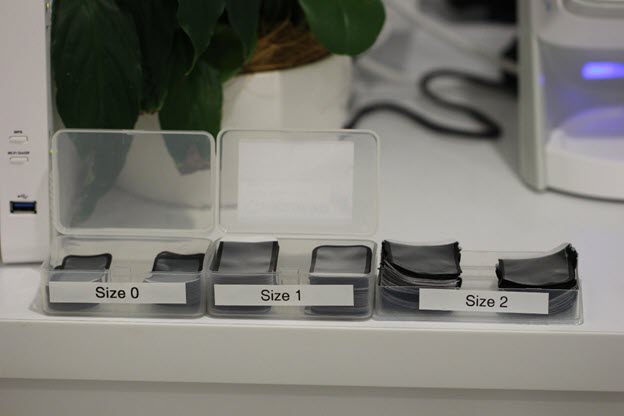Digital X-rays in Dentistry
According to Pure Dentistry Dental in Brisbane, X-rays are an essential input to a dental treatment plan.
While some dental clinics are still using conventional dental x-rays, digital dental x-rays are becoming more and more popular. These days, digital radiographs are commonly used by many modern dental clinics across Australia. Pure Dentistry is using two digital x-ray machines in their surgeries and they are planning to invest in a new 3D CBCT machine in future.
Dental x-rays are one of the most-used devices in dental examinations and treatments. In the past 12 months, our six part-time dentists took 3,145 intraoral radiographs as part of their dental diagnostic and treatment services. Our practice is only 3 years old and we expect this number to increase as the size of our patient base grows in the coming years.

Educating Patients on the Benefits of Dental Radiographs
The dental team should educate patients about the importance of dental x-rays and how they are beneficial. Dentists should be able to explain common health issues that can be detected only using dental X-rays.
Many people have heard or read about the harmful effects of radiation and fear dental x-rays. Some patients, e.g. pregnant women, may deliberately avoid dental care because of fears and misconceptions. Therefore, the dental team should be prepared to educate patients about the benefits of radiographic dental examinations. Many patients are not aware of the values of dental x-rays and yet educating patients about the importance of dental x-ray is sometimes overlooked.
Below is a short description of how we use dental radiography in our dental practice.
Periapical X-rays
Periapical is an intraoral radiograph. Intraoral simply means that an X-ray is taken with the film inside the mouth, but the X-ray machine would be positioned outside the head. Periapical X-rays are also known as PA. PA is used to view:
- Tooth
- Tooth Root
- Apex
- Surrounding bone and tissue
Periapical means around the terminal end of a tooth root. In other words, PA is taken to show the tooth from the crown of the tooth to the tip of the tooth root. PA films are available in three sizes. Kids Dentist in Brisbane uses size 0 or 1 for children and Pure Dentistry uses size 2 for examining front and back teeth in most adults.

Bitewing X-rays
Bitewing is an intraoral radiograph that is taken to examine the crowns of both upper and lower teeth. Bitewing x-ray film is used to show the spaces between the teeth. This film is used to locate cavities on the interproximal surfaces of the teeth. In simple words, the main intent of the bitewing image is to detect caries between the teeth. The dental bitewing is also a useful tool to detect periodontal conditions and bone levels between teeth. It can be used to detect changes in bone density due to gum disease.
Bitewings can also be used for the detection of calcium buildup. Essentially, the purpose of bitewing is to view proximal surfaces of the teeth and does not provide an image with much of the surrounding tissue.
Bitewings can demonstrate:
- Interproximal caries at early stages
- Revealing small cavities
- Secondary caries under the fillings
- The outline of the fillings
- Previous treatments under the fillings
- Bone loss in the early stages of periodontal disease
A bite-wing film has a tap attached to the film. That tap is known as the wing of the film and the patient bites on that wing to hold the film inside the mouth.

Panoramic X-ray (OPG)
Orthopantomograph (OPG) may be used as a preliminary survey of a patient’s teeth. OPG provides a panoramic view of the jaws. It allows visualization of all dental arch and adjacent regions with only one x-ray exposure.
OPG is the most-often used extraoral radiograph in dentistry, however, it has limitations for conservative dentistry because the quality of the image is not adequate to detect early carious lesions. Therefore, OPG is used for initial oral examination and may not eliminate the need for intraoral radiographs. Sometimes a dentist may need a combination of OPG and follow-up intraoral radiographs. OPG is not a substitute for intraoral radiographs, it is more so a supplement. On the other hand, some dentists find OPG to be more child-friendly because there is no need to place a film in the mouth of an anxious child.
CBCT
CBCT machines are designed to provide a 3D visualization of dental tissues with a relatively low radiation dose. CBCT machine can also reconstruct a panoramic image and spare patients from exposure to OPG X-ray.
Some CBCT machines can reconstruct Bite-Wing and PA radiographs as well, however, the current dose of the CBCT machines does not support the use of CBCT for routine and standard caries detection. CBCT may be used for assessment and planning before a complex dental surgery or when routine examination and standard radiograph images are inconclusive for the detection of a vertical root fracture. For more information regarding indications for CBCT, you can read Nicholas Drage’s paper: “CBCT in general dental practice”.
Currently, we are referring our OPGs and CBCT patients out, however, we are studying our options to purchase a CBCT/OPG machine. Our Dentists provide emergency dental services in Brisbane and OPG/CBCT services are closed after-hours and weekends. Patients who are in agonizing pain from an abscessed wisdom tooth on Friday night have a lot of difficulties with waiting until Monday for an OPG or Cone Beam. We believe we would be able to provide them with better services when we acquire a 3D CBCT machine.